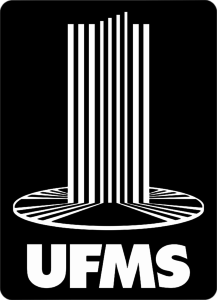Use este identificador para citar ou linkar para este item:
https://repositorio.ufms.br/handle/123456789/12122| Tipo: | Trabalho de Conclusão de Curso |
| Título: | PERFIL CLÍNICO, FUNCIONAL E DESFECHO DE PACIENTES ACOMPANHADOS POR UM NÚCLEO DE CUIDADOS PALIATIVOS EM UM HOSPITAL UNIVERSITÁRIO |
| Autor(es): | MARCOS VINÍCIUS SAKAMOTO YONAMINE |
| Primeiro orientador: | KARLA LUCIANA MAGNANI SEKI |
| Resumo: | Analisar o perfil clínico, funcional e desfecho de pacientes acompanhados por um núcleo de cuidados paliativos em um hospital universitário. |
| Abstract: | Introduction: Advances in medicine have led to a shift in the understanding that not all diseases are curable, giving rise to new approaches in healthcare. The World Health Organization (WHO) defines Palliative Care as an approach that improves the quality of life of patients and their families by alleviating suffering through the management of pain and other physical, psychosocial, and spiritual issues. At the Maria Aparecida Pedrossian University Hospital (HUMAP), part of the EBSERH Hospital Network of the Federal University of Mato Grosso do Sul, the Center for Teaching, Research, Care, and Outreach in Palliative Care (Nepae CP) operates as a multidisciplinary team. Its mission is to ensure excellence in patient care while actively contributing to the education of university-affiliated students, as part of its role within a teaching hospital. Since 2020, Nepae CP has structured its activities through formal assessments documenting the need for palliative care. Patient data are compiled in digital spreadsheets, including information such as diagnosis, admission unit, medical devices used, dates of hospitalization and referral to the service, purpose of care, and PPS (Palliative Performance Scale) scores. Objective: To analyze the clinical and functional profiles, as well as the outcomes, of patients receiving follow-up care from a university hospital’s palliative care center. Methodology: A retrospective analysis was conducted using data from patients monitored by Nepae CP at HUMAP, grouped by year (2020, 2021, 2022, and 2023). Descriptive statistics (mean and standard deviation) will be used to characterize the sample. Comparative analysis of variables—including sex, age, clinical diagnosis, medical speciality, functional capacity (PPS), medical devices used, date of hospital admission, date of palliative care referral, and clinical outcomes (discharge, death, or transfer)will be performed using ANOVA. A significance level of 5% will be applied to all statistical tests. Conclusion: The analysis indicates that the majority of patients followed by Nepae CP are elderly, male, and of mixed race (pardo), with hospitalizations primarily due to neoplasms, HIV/AIDS, or stroke. Invasive medical devices were used in most patients, and death was the most common clinical outcome. The findings also suggest improvements in work practices and increased efficiency in patient assessments over time. Keywords: Palliative Care; University Hospital; Clinical-Functional Profile; Health; Multidisciplinary Team. |
| Palavras-chave: | Palliative Care University Hospital Clinical-Functional Profile Health Multidisciplinary Team. |
| País: | |
| Editor: | Fundação Universidade Federal de Mato Grosso do Sul |
| Sigla da Instituição: | UFMS |
| Tipo de acesso: | Acesso Aberto |
| URI: | https://repositorio.ufms.br/handle/123456789/12122 |
| Data do documento: | 2025 |
| Aparece nas coleções: | Fisioterapia - Bacharelado (INISA) |
Arquivos associados a este item:
| Arquivo | Tamanho | Formato | |
|---|---|---|---|
| 27298.pdf | 950,47 kB | Adobe PDF | Visualizar/Abrir |
Os itens no repositório estão protegidos por copyright, com todos os direitos reservados, salvo quando é indicado o contrário.

